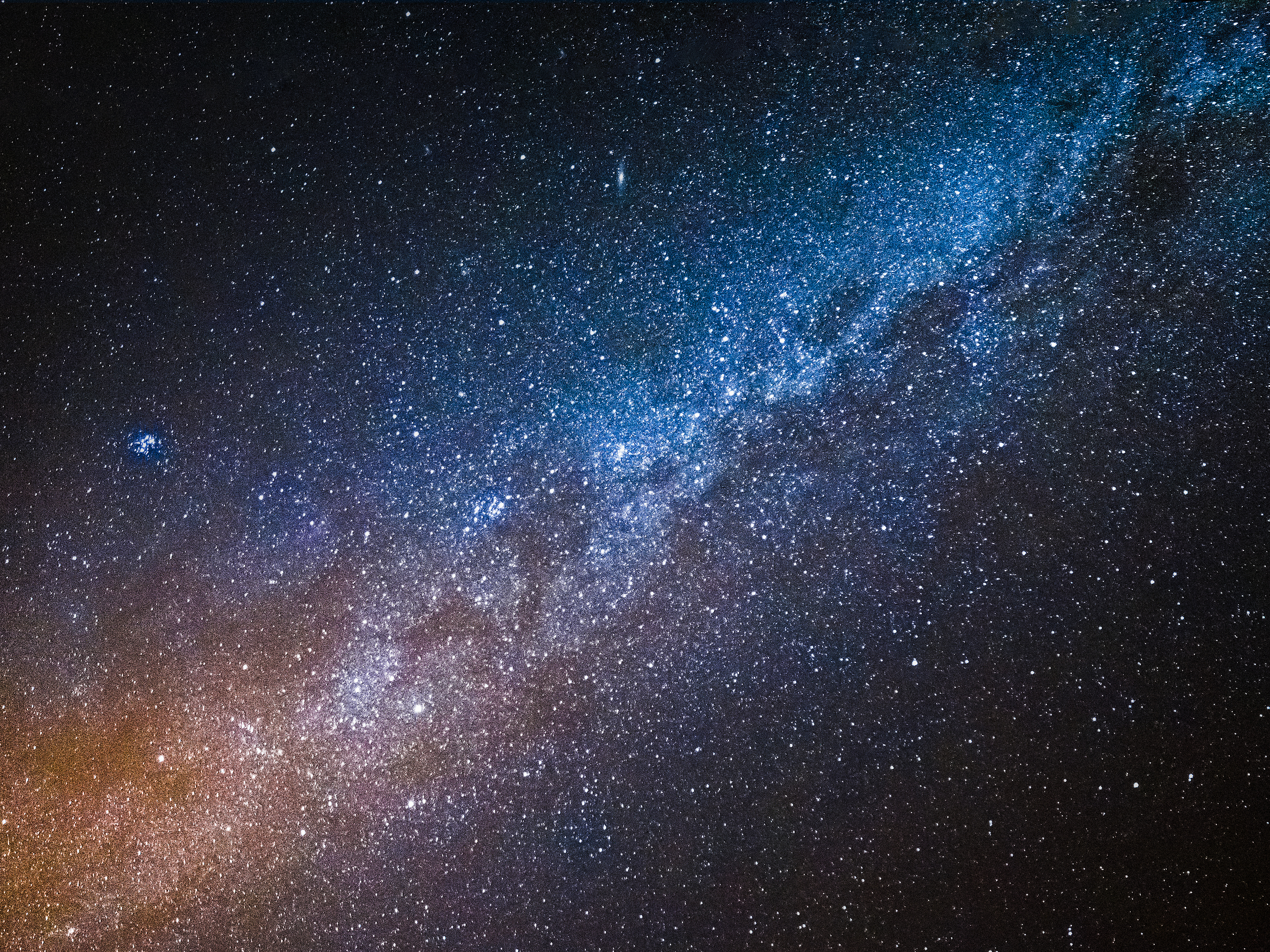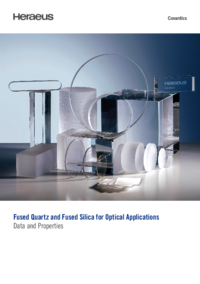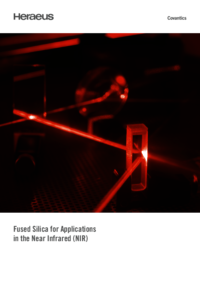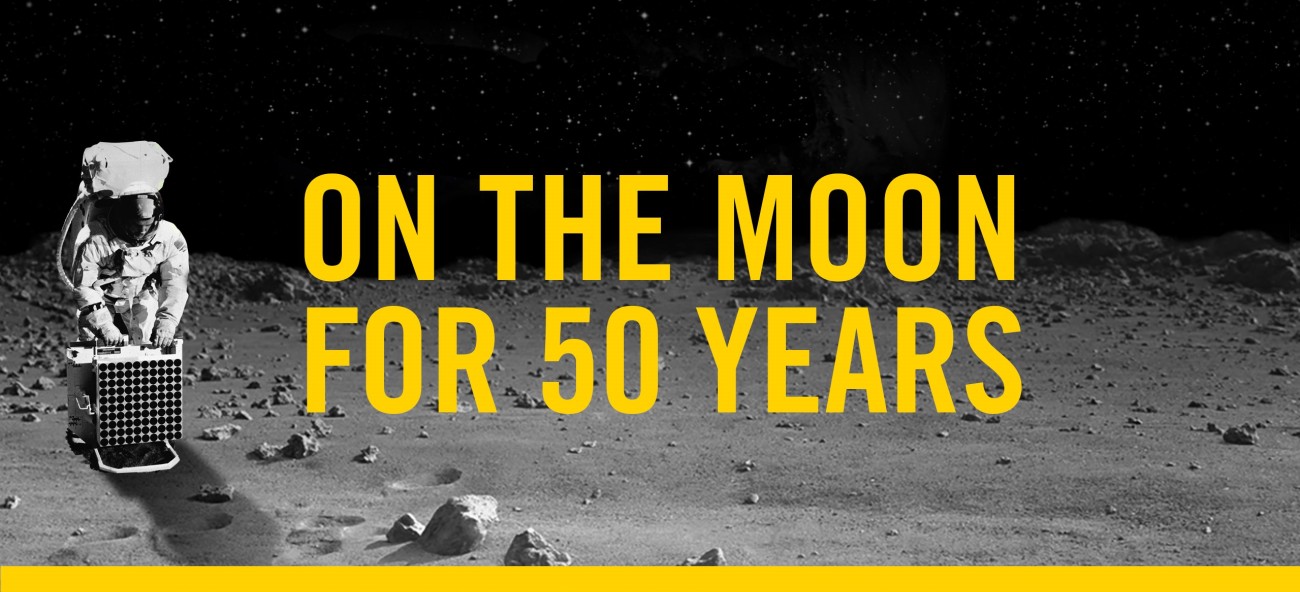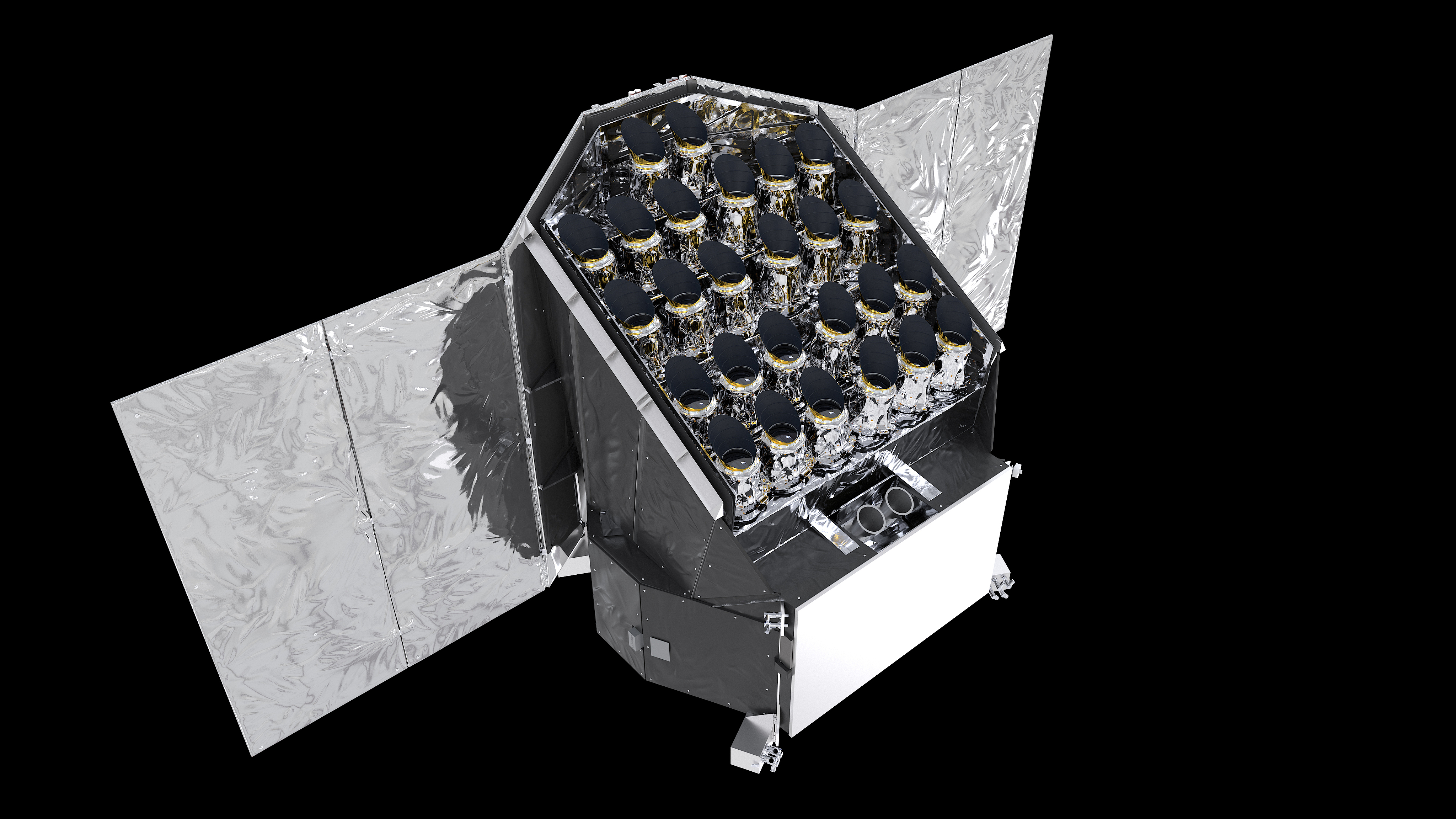Aerospace
Many aerospace applications require the use of high-end materials. They should endure the hostile environment, need to be shock resistant, low weight and most importantly reliable with a long lifetime.
Many airplanes and spacecrafts have numerous sensors that use optics to detect, track or identify countless things. In general, devices are a smaller remote version of a laboratory setup on the ground. Many of these applications include remote sensing, thus needing radiation hard diffusors made out of fused silica.
The sensors may need a simple transparent cover that allows UV to NIR radiation to pass through, or require some optical components (e.g. lenses or prisms). Here it is important to understand what grade of fused silica offers what transmission performance for a specific wavelength region. However, not only is the absolute value of transmission important, it may also be of interest to know what to expect in terms of bubble or inclusion size and density. This is important to judge if any scattering defects or obscurations will be in the clear aperture of the optic.

Because the sensors are in the air (or in space), it is difficult or impractical for a technician to perform maintenance during flight. Therefore, it is paramount to use materials that can sustain the working conditions for at least the duration of the flight. For space applications, this may be several years or more than a decade. Particularly in space, the materials have to sustain a dose of ionizing radiation without significant aging or degeneration of properties. Knowing how high intensity light and radiation can damage fused silica is very valuable to select the optimum materials.
Astronomy
Astronomy deals with the observation and study of celestial objects (such as galaxies, stars, planets, moons, asteroids and comets) and processes (such as supernovas, explosions, gamma ray bursts and cosmic microwave background radiation). Scientists employ devices on earth and aboard satellites for their research.
The most commonly known means for astronomical studies are telescopes. Depending on the wavelength they operate in, they use reflecting optics (mirrors) or transmissive optics (lenses / beam splitters). Some key components in telescopes are made of fused silica, especially if the telescope operates from the visual into the near infrared wavelength region.
The larger the telescope, the better the resolution, so scientists build even arrays of telescopes. This means that individual telescopes that are spaced meters or kilometers apart can work together to generate high-resolution images. In this case, it is important to synchronize the image generation. This is typically done by employing fiber optic communication.
Scientists not only use telescopes for their research but special detectors to detect particles or phenomena that originate in space. Another example is the gravitational observatory that measures gravitational waves by very precise interferometry.

Heraeus Products in Space
Projects like MOON, GAIA, EUCLID and more provide insights about the role Heraeus plays in the future of space exploration. Read more about some projects below.
